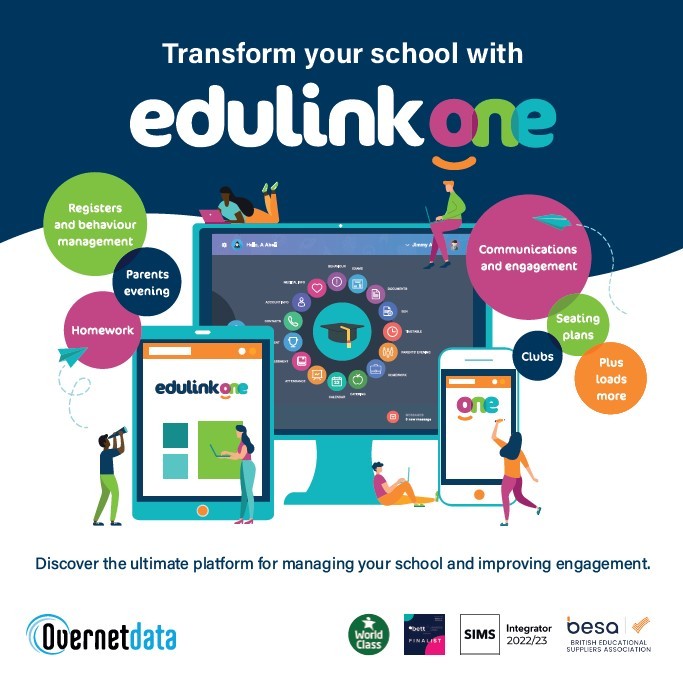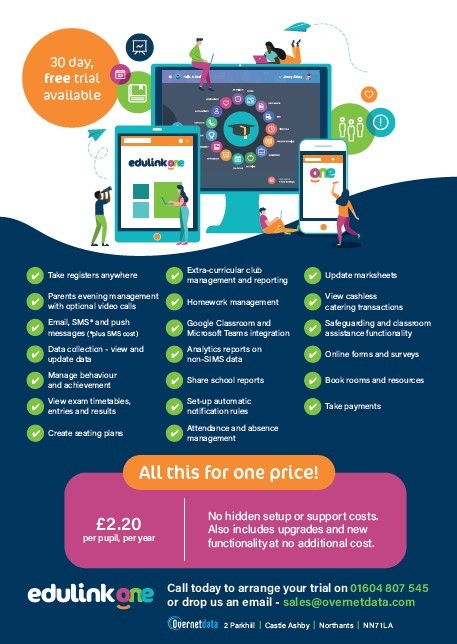
17/03/2023
Addressing the workload crisis in schools – how to ‘make time’ with technology
How many times have you heard someone say that there simply aren’t enough hours in the day? There’s little doubt that the demands placed on schools are unrealistic. In fact, it’s a `quadruple whammy’ for school leaders, who not only have to contend with excessive staff workloads but also the additional complications of mental health and teacher shortages – and that’s all within the context of chronic under-funding. So what can be done to release some of the stress in the system and reduce school admin?
The impact of excessive school workload
Excessive workload has a huge impact on teachers’ health, safety and wellbeing and undermines their ability to do their job effectively.
According to the NASUWT, four out of five teachers say that their workload and the stress of the job have increased, with half saying that workload has affected their physical and mental health.
Meanwhile, in research by the NEU, who surveyed more than 10,000 school and college staff, 95% of respondents reported that they were worried about the impact of increased workload on their wellbeing, with 35% claiming that they would no longer be working in education within five years.
Whilst it’s probably unlikely that the current strike action will result in a material difference to the long-standing funding shortfall, there are things that can be done to alleviate stress, reduce workload and school admin.
Low-hanging efficiency gains
Technology is used in organisations of all shapes and sizes to improve efficiency. Whether it’s a local florist optimising their supply chain, or a global corporate improving how their international teams collaborate, there’s no question that technology helps improve the way employees carry out tasks. It very often speeds up existing processes or allows new, more flexible ways to work.
It’s no different in education. The education technology industry in the UK is one of the fastest growing ‘edtech’ markets in the world. A research report published by DfE in November 2022 counted over 1,000 companies engaged in supplying products and services to the education market in England alone. Many of these companies will own multiple products too, so there are literally thousands of product options available.
This in itself can present a problem. No two education technology products are the same, and many schools find themselves with multiple products that overlap in terms of functionality. It also means that school staff often have to log-in to multiple systems and toggle between them to be able to do their job effectively. That’s certainly not achieving efficiencies, of time, budget or reduced school admin.
In fact, one key area for improvement highlighted by DfE in November 2022 relates to ensuring that edtech solutions allow multiple functions that are interoperable, whilst at the same time improving usability and access for school staff.
So it’s important to have fewer tools that do more, and they should be easy to use for all.
So what are some of the ways that you can digitise your approach to deliver efficiencies and productivity gains to your staff, both in and out of the classroom?
Streamlining administration
There’s a huge administrative burden in schools relating to collecting and updating pupil and parent data – including for new admissions on an annual basis. By doing this online and write back to your MIS in a single click, you can save hours of admin time (not to mention reams of paper) and ensure you have more accurate data.
Digital tools enable your school to organise parents’ evenings in minutes rather than hours (or even days), significantly reducing school admin. You can set up events with ease, allocate timings and staff and give parents access to book an online or in-person appointment. You can then send out reminders to those who have not booked with a couple of clicks. Teachers and parents can print their timetable and afterwards you can analyse attendance.
The bane of many a school office is managing absences and chasing up parents can take a lot of time. Allowing parents to notify of absences online streamlines the process, plus the ability to quickly send messages to parents with absent children can dramatically cut the administration burden.
Digital tools can also remove the hassle from extra-curricular club management by setting them up and then simply allowing students or parents to book onto their chosen activities. Not only that but you can easily track and report attendance, view relevant student data and message important information to stakeholders with ease.
Meanwhile a resource booking system allows staff to reserve rooms or resources wherever they are in the school in just a few clicks, saving time and stress.
You can also slash the admin burden relating to managing exam entries, timetables and results. Make results available online on a specific day and time with ease and help parents to support their children by sharing access to appropriate exam information and results too.
Allowing teachers to teach – with all relevant information at their fingertips
Digital tools not only allow teachers to take the register from wherever they are, on any device, but as absences are written back straight away to your MIS, parents can be contacted with ease in a timely fashion, which helps reduce unauthorised absences.
Teachers can also get a quick overview of their class’s key information, including historical behaviour, achievement and attendance information, whilst new notes can be added quickly and simply.
Teachers can employ demerit points and detentions where necessary in order to manage unconstructive behaviour, and messages to students and parents can be automated so you are as efficient and effective with your notifications as possible – you don’t have to remember to manually inform those concerned. The same is also possible with rewards and achievements – motivating through celebrating.
Meanwhile, seating plan tools make designing your class layout really straightforward, taking a matter of minutes to configure each classroom in the way that makes most sense.
Timetables, your calendar and a notice board make it easy to keep up with where you need to be and with what’s going on at any given moment.
You can even set, allocate and record homework so that students, parents and staff can easily track what work is due when, and see when it has been completed. Grades can then be entered into marksheets with ease, from wherever you are. All these items help to reduce the school admin burden, which can even help facilitate a better work-life balance.
Improving parental engagement
There’s plentiful research that points to how digital tools can improve parental and student engagement via timely messaging and notifications. It’s now feasible to share information about achievements and behaviour, homework, detentions and attendance, leading to stronger school-parent partnerships.
It’s also easier than ever to share school reports, assessment data and key documents from your MIS with parents and staff.
These tools can also integrate with your school’s cashless catering system, allowing parents, students and staff to view information about their account balances without having to log into a separate system.
You should also consider replacing paper forms and permission slips with an online system that makes issuing letters and collecting replies easier than ever.
Leadership dashboard and analytics
Digital systems will also help your senior leadership team to instantly see a visual summary of key homework, behaviour, club attendance and document access data which can help them spot trends, make improvements and address issues early.
You can get instant, remote access to a student’s entire data record, including SEND information, assessment and attendance data, behaviour records, medical information and past reports. Having your finger on the pulse of such data in such an holistic, straightforward way can help your school develop strategies to support each student and make more timely interventions.
Tools are also now available to help schools make and manage safeguarding referrals and get immediate support in your classroom by calling for assistance when you need it, in the knowledge that someone is never far away from giving you the help that you need.
Small incremental gains that lead to big improvements
Looked at in isolation, you may feel that the points mentioned above are not going to make a significant impact on workload or wellbeing. However, we’re confident that a system such as Edulink One, that can achieve all of the above, in a user-friendly way will ensure that staff are able to find significant efficiencies with time-consuming, low-level tasks and reduce school admin.
The energy they save can then be channelled into more important activities and, ultimately, help reduce workload, reduce stress, favourably impact work-life balance, and even make it easier to retain, or attract employees.
But don’t just take our word for it, hear what our customers have to say…







